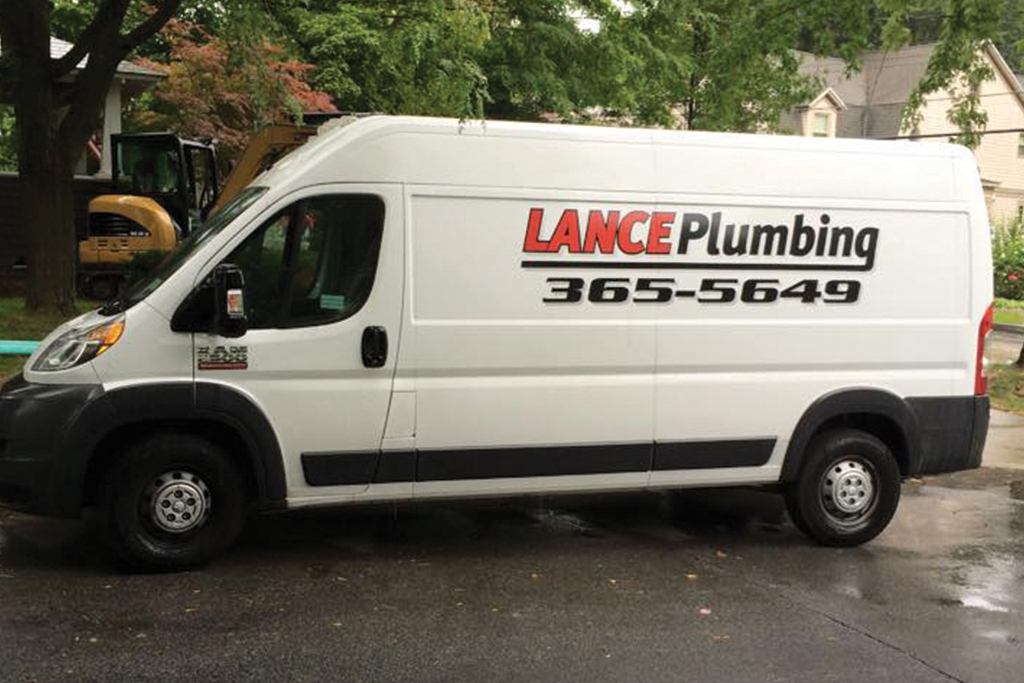
Courtesy Lance Plumbing
By Chris Graf
As water conservation becomes increasingly important nationwide, homeowners are turning to innovative plumbing fixtures to reduce their water bills and environmental footprint. While these water-saving solutions may not yet be a widespread trend in some regions, they are rapidly becoming the norm in drought-prone areas.
“They aren’t really a big thing around here,” said Roy Lance, owner of Lance Plumbing in Saratoga. A Master Plumber, Lance will celebrate his company’s 20th anniversary in January. His team of four serves both residential and commercial customers throughout the region. Despite the slower adoption locally, Lance believes more homeowners could benefit from water-efficient upgrades.
One of the simplest ways to reduce water usage is by installing low-flow shower heads. While traditional shower heads use about 2.5 gallons per minute, low-flow models can reduce water consumption by up to 40%. According to the Environmental Protection Agency (EPA), this could save the average homeowner as much as $100 a year on water bills.
“They’re designed to feel like you’re getting the same amount of water,” Lance explained. “You won’t notice a difference in performance, but you’ll be using a lot less water.”
By maintaining proper water pressure while reducing flow, low-flow shower heads can cut a household’s water consumption by as much as 2,900 gallons annually. And because less hot water is used, homeowners can also expect to see savings on their energy bills, creating a dual benefit.
Another impactful upgrade is installing high-efficiency toilets. Older toilets, especially those made before 1994, can use over 3.5 gallons of water per flush. In contrast, modern high-efficiency models use only 1.28 gallons. This is made possible by larger, more efficient trap openings that allow for more effective flushing despite using less water.
“A lot of the more modern toilets use lower gallons per flush and actually flush better because the trap has been increased from a 2.5-inch to a 3-inch opening in the bottom,” Lance said.
For those looking to reduce water usage throughout the house, water-saving faucets are another smart option. These faucets function similarly to low-flow shower heads by using aerators to mix air into the water stream, reducing the flow from about 2.2 gallons per minute to 1.5 gallons.
For outdoor water use, Lance recommends installing a separate water meter for lawn sprinkler systems. This option allows homeowners to pay a lower rate since sprinkler water doesn’t enter the sewer system, potentially saving significant money during the summer months.
“That would save you money on your water bill because you are paying a reduced rate. You aren’t paying for sewer at the same time,” said Lance. “All in, it generally costs about $500 to install a separate meter. In the long haul, it definitely pays off.”
Additionally, low-flow sprinkler heads can help homeowners maximize water efficiency. These pressure-regulated sprinklers use fewer gallons per minute while maintaining effective lawn irrigation.
For homeowners not ready to invest in new technology, Lance stresses the importance of addressing leaks. A leaky toilet can waste up to 200 gallons of water per day—equating to 6,000 gallons a month. Dripping faucets may seem minor, but they can waste more than 3,000 gallons of water per year.
“If your faucet is dripping or your toilet is leaking, you are wasting a lot of water,” Lance said. “It’s simple to fix and can make a big difference.”
By making these small changes, homeowners can significantly reduce their water consumption, save money on their bills, and contribute to a more sustainable future. Whether it’s upgrading to low-flow fixtures or simply fixing leaks, the benefits—both financially and environmentally—are clear.
